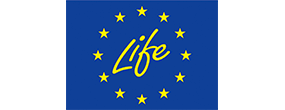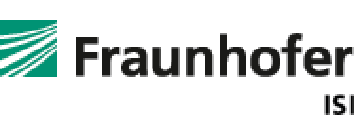Overview
In 2022, the final energy consumption in Estonia was 2.74 Mtoe, which represents an increase by 11% compared to 2000. The residential sector, which is the largest consumer, experienced a decrease of 3.7 percentage points (pp) in its share of total final energy consumption since 2000, dropping from 39.3% to 35.5%. Industry decreased its share by 10.4 pp – from 23.6% down to 13.2% in 2022. Over the same period, the transport sector's share increased by 8.3 pp, the tertiary sector by 4.7 pp, and the agricultural sector by 1.2 pp.
Figure 1: Final energy consumption by sector (with climatic corrections)
Source: ODYSSEEEnergy efficiency for final consumers, as measured by ODEX, improved by an average of 1.9% per year from 2000 to 2022. In industry, the pace of improving energy efficiency has been the highest (5.6% per year since 2000); progression in the other sectors was much lower: about 0.8%/year in the transport sector, 0.7%/year for households, while in services sector, energy efficiency remained at the level of 2000.
Figure 2: Technical Energy Efficiency Index
Source: ODYSSEERegarding energy efficiency, Estonia has set a target by 2030 to keep final energy consumption at the level of 32 to 33 TWh/a (about 2.84 Mtoe). According to the new wording of the EU's Energy Efficiency Directive (2023), Estonia's obligation to save energy will also be tightened, and the maximum allowed final consumption for 2030 will be 30 TWh (2.58 Mtoe) instead of the previous 33 TWh (2.84 Mtoe). In 2022, the final energy consumption in Estonia amounted to 2.74 Mtoe, i.e., that the final energy consumption has remained at the same level as in the last ten years.
However, there has been some structural shift in the final consumption of energy. The energy demand of the service sector (especially information and communication, trade, professional and technical activities) has increased and the share of energy consumption of the industrial sector in total consumption has decreased. The decrease in energy use in industry is also caused by the significant increase in the price of carbon dioxide after 2017 within the framework of the EU emissions trading system. The impact of the COVID-19 pandemic also reduced industrial energy demand in 2020-2022.
Table 1: Sample of cross-cutting measures
| Measures | NECP measures | Description | Expected savings, impact evaluation | More information available |
|---|---|---|---|---|
| GEN-EE5014 Requirement for remotely readable electricity meters | Yes | In order to achieve energy saving target set for 2030, it is necessary to make all building and apartment-based water, electricity, gas and heating meters remotely readable by 2026. | Medium | Link |
| GEN-EE5015 Modernization of heating systems, oil boiler replacement | Yes | The aim of the measure is to transfer the heating systems of apartment buildings and public buildings to renewable energy sources (incl. heat pumps) and to connect to district heating. | Low | Link |
| GEN-EE5023 Fuel and energy taxes | Yes | The VAT and excise duties paid to the state budget make an indirect but still significant contribution towards the financing grant from the state budget to final customers for energy conservation measures. | High | Link |
Buildings
Specific unit consumption per m2 for heating in residential buildings has declined by about 20% (i.e. 1%/year) since 2000, mainly due to the increased use of heat pumps. The small variations from the long-term trend in some years (e.g. in 2007-2008 and in 2019-2020) can be attributed to the fact that normalization with heating degree days does not "perfectly" correct the impact of weather, especially when there are large annual variations. Figure 4 illustrates the changes in the unit consumption for the other end- use in households (i.e. except for heating). The share of electricity use for appliances and lighting per dwelling has increased (7.6 pp) due to the wider use of heat pumps, while energy use for hot water production per dwelling and for cooking has decreased (respectively by 6 pp and 1.6 pp).
Figure 3: Energy consumption of household space heating per m2 (with climatic corrections)
Source: ODYSSEE; ambient heat included.Figure 4: Energy consumption per dwelling by end-use (except space heating)
Source: ODYSSEEIn 2022, energy consumption in residential sector was approximately 0.038 Mtoe higher than in 2000. Energy saving measures implemented in residential buildings helped to reduce energy consumption the most (total energy savings of about 0.241 Mtoe). At the same time, other factors: the effect of climate (0.033 Mtoe), more dwellings (0.133 Mtoe), lifestyle changes, more electrical equipment, larger homes (0.055 Mtoe), etc.) have unfortunately increased the energy consumption of housing.
Figure 5: Main drivers of the energy consumption variation in households
Source: ODYSSEE; ambient heat included.Both energy consumption and electricity consumption per employee have increased by 19% and 58% in 2022 compared to 2000, respectively. The reason is the introduction of new buildings equipped with air conditioners and the wider use of other electrical equipment. The final energy consumption in the service sector has been fairly stable since 2008, following the same trend as the number of employees.
Figure 6: Energy and electricity consumption per employee in services (with climatic corrections)
Source: ODYSSEEUp to now, the energy efficiency policy in the buildings sector has been targeted mainly at households through various measures that increase energy efficiency of residential buildings. The Government has decided that investing into buildings for improving the energy efficiency must continue, while the public sector must lead the way in maintaining and constructing buildings. Investments into the energy efficiency of apartment buildings must be continued as well and opportunities to expand state measures for promoting energy efficiency in family houses are to be found. In the heating sector, investments into the development or renovation of district heating systems are supported. Drawing up local development plans for energy supply in municipalities are financially supported by the central Government. Also, it is planned to support local, as alternatives to district heating, heat supply systems if these prove to be the most sustainable solutions for the region and ensure compliance with environmental standards.
Table 2: Sample of policies and measures implemented in the building sector
| Measures | NECP measures | Description | Expected savings, impact evaluation | More information available |
|---|---|---|---|---|
| HOU-EE5028 Atmospheric air protection program, including heating equipment for apartment associations | Yes | The aim of the measure is to support activities that lead to the reduction of the negative environmental impact of energy (construction of systems for cleaning combustion equipment's ambient air pollutants, including the application of the best possible technique, reconstruction or construction of a boiler house not located in the district heating network for heat energy production from wood fuels, construction of a local heating system based on a geothermal heat pump, if there is no possibility of connection to the district heating network and the heat pump is used to operate green energy) and also support more efficient use of energy. | Low | Link |
| HOU-EE5149 Renovation of apartment buildings 2021-2030 | Yes | Renovation of apartment buildings with state support. The aim is to renovate buildings to (at least) energy class C level. 30% of the cost of the work is supported - in some areas even more (up to 50%). | High | Link |
| HOU-EE5147 Reconstruction grant for small residences 2021-2030 | Yes | The purpose of the measure is to support activities with state aid that improve the quality of the housing stock and reduce energy consumption by supporting the increase in energy efficiency of small houses. | High | Link |
| SER-EE5035 Renovation of kindergarten buildings | Yes | The purpose of the measure is to improve energy efficiency through investments in public sector buildings, reduce the energy delivered to the building and building maintenance costs, or promote the use of renewable energy. Support is provided to achieve the objective of the measure. | High | Link |
| SER-EE5030 Modernisation of street lighting | Yes | The purpose of the measure is to improve energy efficiency through investments in public sector buildings, reduce the energy delivered to the building and building maintenance costs, or promote the use of renewable energy. Support is provided to achieve the objective of the measure. | High | Link |
Transport
In 2022, road transport accounted for 97.4% of the energy consumption of the transport sector. Compared to the year 2000, the share of road transport in the entire transport sector has increased by about 7 percent point. The share of rail transport has decreased by 6.4 pp, from 8% in 2000 to 1.7% in 2022. The share of water transport has decreased about 0.6 pp and the share of air transport has remained the same.
Figure 7: Transport energy consumption by mode
Source: ODYSSEEIn 2022, the share of buses in passenger traffic decreased by 15.8 pp compared to the 2000, while the share of rail transport decreased by 0.4 pp. The share of cars in passenger transport increased by 16 pp, between 2000 and 2022. This increase is mainly due to the increase in the number of cars.
Figure 8: Modal split of inland passenger traffic
Source: ODYSSEEFreight transport by train accounted for 88% of total freight transport in 2000, and 31.9% in 2022 (the share decreased by 56.5 pp). At the same time, freight transport by road has increased by 56.5 pp in 2022 compared to 2000. Freight transport by road accounted for 11.6 %, in 2000, and 68.1% in 2022.
Figure 9: Modal split of inland freight traffic
Source: ODYSSEEIn 2022, energy consumption in the transport sector was 0.29 Mtoe higher than in 2000 (+52%). This trend is mainly due to the increase in passenger traffics (+0.225 Mtoe) and modal shift (higher share of private cars and road freight in traffics that pushed up consumption by +0.205 Mtoe). These effects are much higher than energy savings effects (-0.124 Mtoe).
Figure 10: Main drivers of the energy consumption variation in transport
Source: ODYSSEEUp to the present, the primary instrument for influencing energy use in the transportation sector has been excise duties, and the fuel excise has been raised on ten occasions during the last 22 years. The Government has decided to foster the use of cars with lower fuel consumption and environmental impact. Projects aimed at improving energy efficiency in the transportation sector have been implemented under the green investment scheme. The consumption of energy by the transport sector is planned to be reduced through four areas of action: decreasing the need for transport, including making freight transport more efficient and environmentally sustainable and considering sustainable commuting principles in the planning process; increasing the use of public transport; making vehicles more ecological and from 2025 also with car registration and annual tax.
Table 3: Sample of policies and measures implemented in the transport sector
| Measures | NECP measures | Description | Expected savings, impact evaluation | More information available |
|---|---|---|---|---|
| TRA-EE5019 Eco driving | Yes | The aim of sustainable driving training is to reduce vehicle fuel consumption, environmental pollution and increase road safety. All new license holders are expected to receive mandatory sustainable driving training. | High | Link |
| TRA-EE5020 Time-based road toll for heavy duty vehicles | Yes | According to the Traffic Act, the Road Transport Act and the Taxation Act, a time-based road toll for heavy duty vehicles is valid in Estonia, the payment of which gives you the right to use road for a certain period. | High | Link |
| TRA-EE5018 Walking and cycling roads | Yes | The measure encourages residents to consider alternative sustainable modes of transport (public transport, bicycles, walking) and thus contributes to the achievement of energy saving goals. | Medium | Link |
Industry
Energy consumption in the industrial sector has decreased significantly between 2000 and 2022, by approximately 38% or 2.1% per year. About a quarter of the energy consumption of the industrial sector is consumed by two energy-intensive industries - non-metallic minerals (i.e. cement) and pulp and paper. Chemicals and metal production is small in the Estonian manufacturing industry. The most important industries for Estonia are forestry and food industry (incl. under “other branches”).
Figure 11: Final energy consumption of industry by branch
Source: ODYSSEEThe most energy-intensive industries in Estonia used to be the cement and paper industries. However, starting in 2020, energy-intensive clinker production will no longer take place in Estonia, and cement will be made from imported clinker. Therefore, in 2022, the energy consumption needed to produce a ton of cement has decreased by approximately 97% compared to 2000. The energy consumption required to produce a ton of paper has decreased by approx. 52% (3.2% per year) in the same period.
Figure 12: Unit consumption of energy‐intensive products (toe/t)
Source: ODYSSEEEnergy savings (-0.752 Mtoe) as well as structural changes towards less energy intensive branches (-0.177 Mtoe) led to decrease energy consumption since 2000. On the opposite, the growth in activity (0.661 Mtoe) has partly offset the saving effect. As a result, energy consumption has decreased by 0.219 Mtoe over the period 2000-2022.
Figure 13: Main drivers of the energy consumption variation in industry
Source: ODYSSEEIt has been estimated that in industry, there is the potential for a 30% of heat and 10% electricity conservation and attaining; this will require adoption of new technologies and an increase in awareness. The focus of energy efficiency in industry must be on the development of energy and resource efficiency. The measure designed to inform industrial companies about the potential for energy savings and resource efficiency as well as to analyse resource use has been launched.
Table 4: Sample of policies and measures implemented in the industry sector
| Measures | NECP measures | Description | Expected savings, impact evaluation | More information available |
|---|---|---|---|---|
| IND-EE5017 Electro intensive enterprises excise duty reduction | Yes | The electricity excise duty discount is accompanied by the obligations of ISO 50001, which promotes energy savings for each energy carrier. | High | Link |
| IND-EE5016 Resource efficiency measure to support investments in manufacturing and mining industry | Yes | More complete use of resources and recycling of waste saves the environment and human health on the one hand and increases the competitiveness of companies through efficient use of resources and energy savings on the other. | High | Link |





